Sampling can be a sensitive topic among weavers. Why, when it takes you so long to set up and weave a piece, would you subject yourself to dressing your loom “just for a sampler”?
Believe it or not, as a newer weaver, those were my thoughts exactly. When I read or heard a teacher recommending sampling before beginning the actual project, I would secretly snicker to myself “yeh, right, as if that’s ever going to happen, I just want to get to the REAL weaving!”
But if there is one thing that weaving has taught me over the years is patience! Oodles of patience. And, I’ve messed up enough times to know that, at least for some projects, sampling is a super good idea.
*This post contains affiliate links. For more information, please see my disclosure policy.
So, that brings us to my recent Monk’s Belt sample. Monk’s Belt is a very old weave structure and has been used in a variety of ways, according to time period and types of looms available.
My sampler used 4 shafts and 6 treadles. The threading is quite simple, as you thread in blocks, which means there is plenty of repetition. My warp is 8/2 cotton, sett at 20 epi. The finished sampler measures 7 x 44″. Tabby is used throughout.

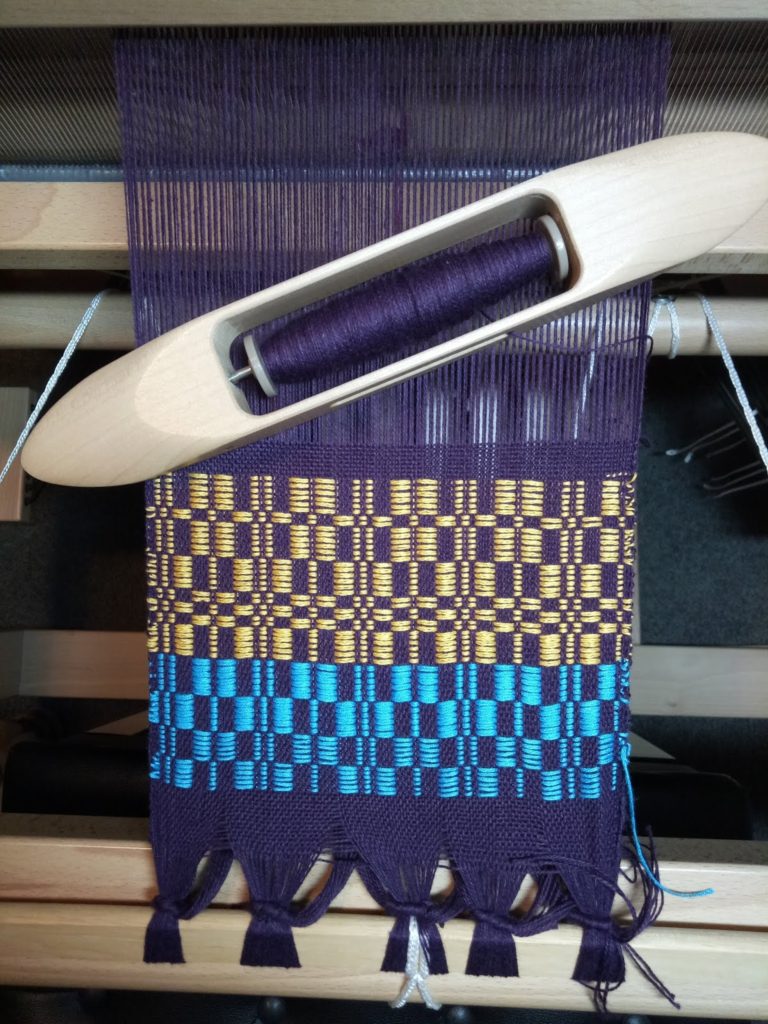
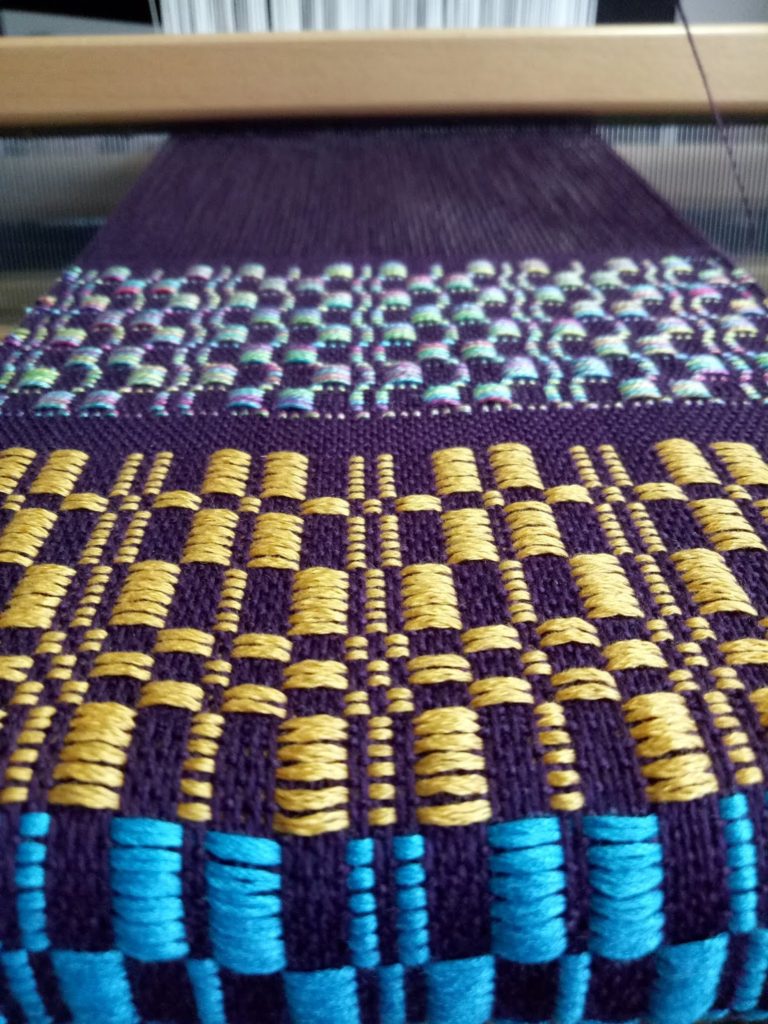
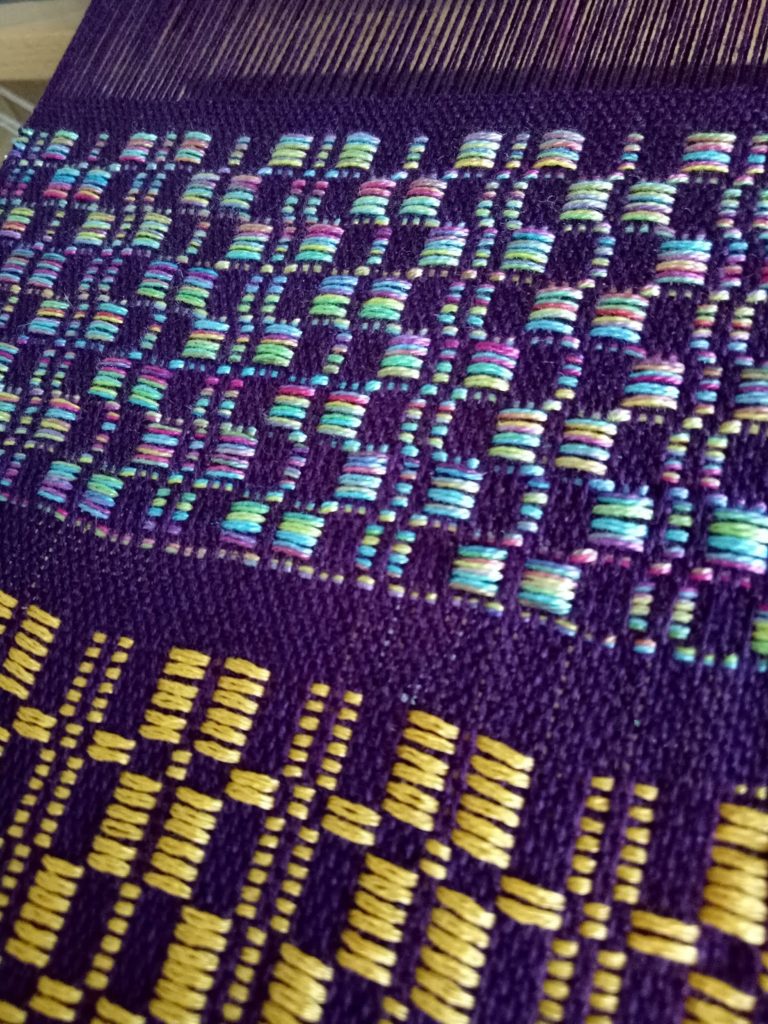
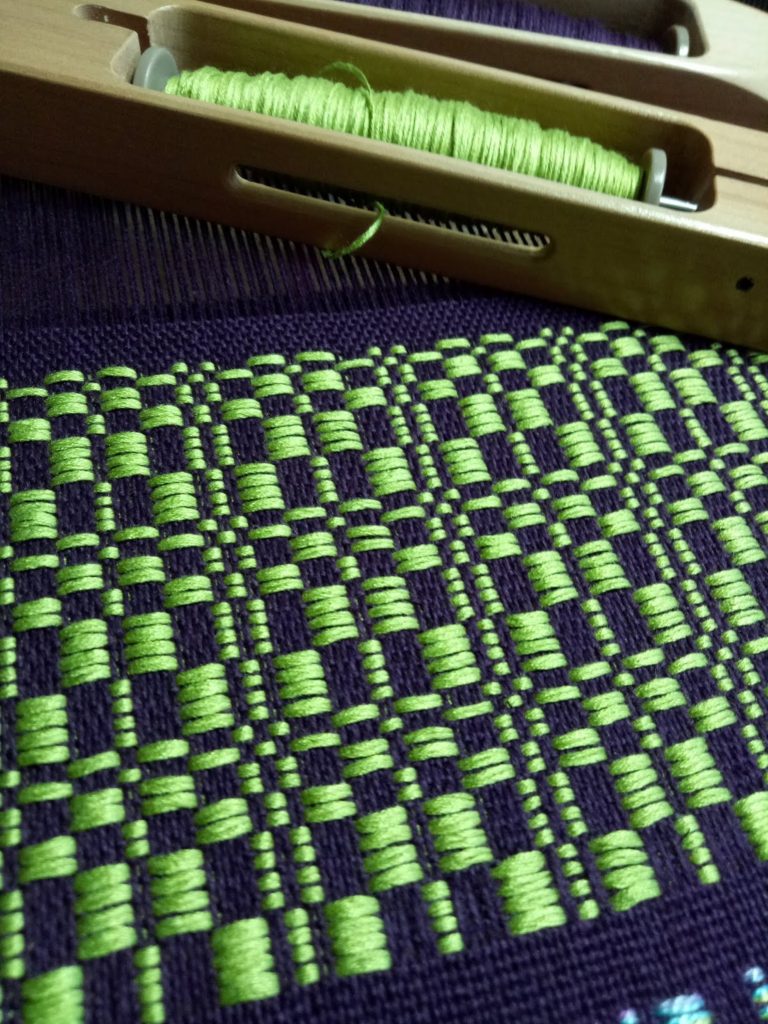
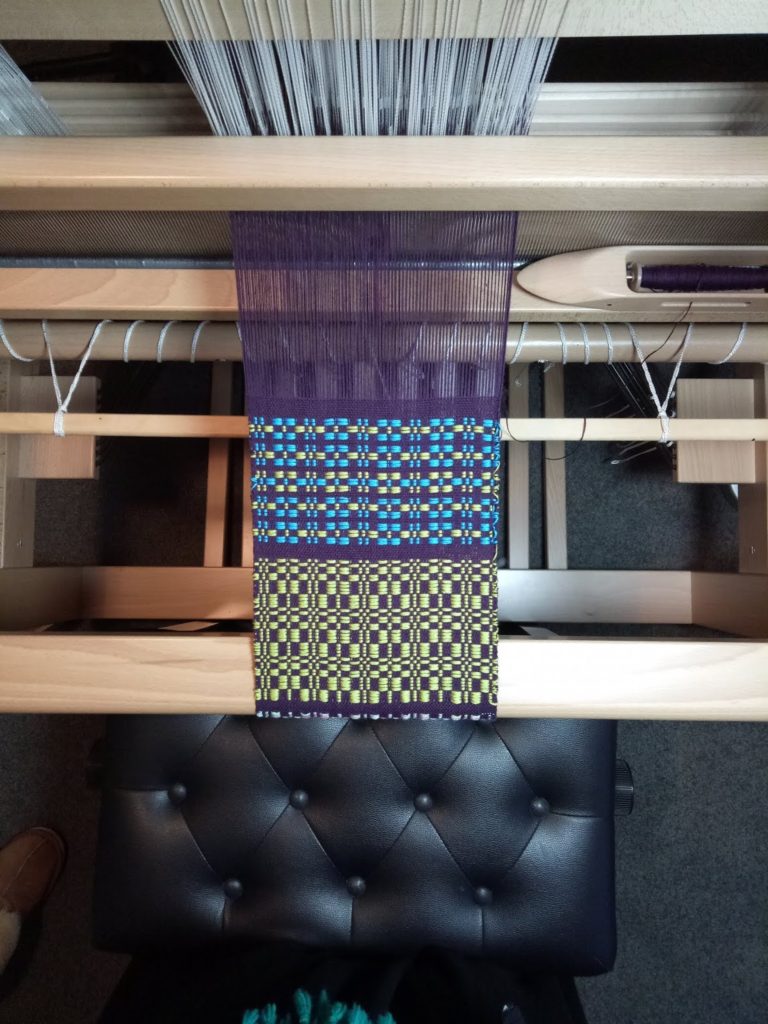
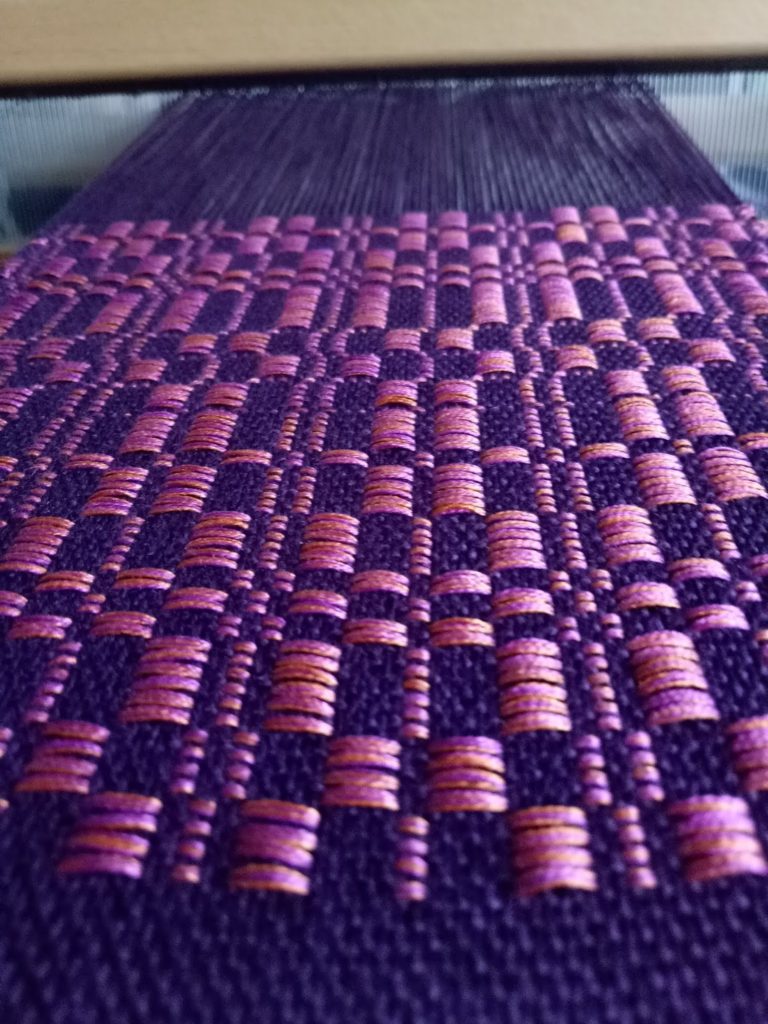
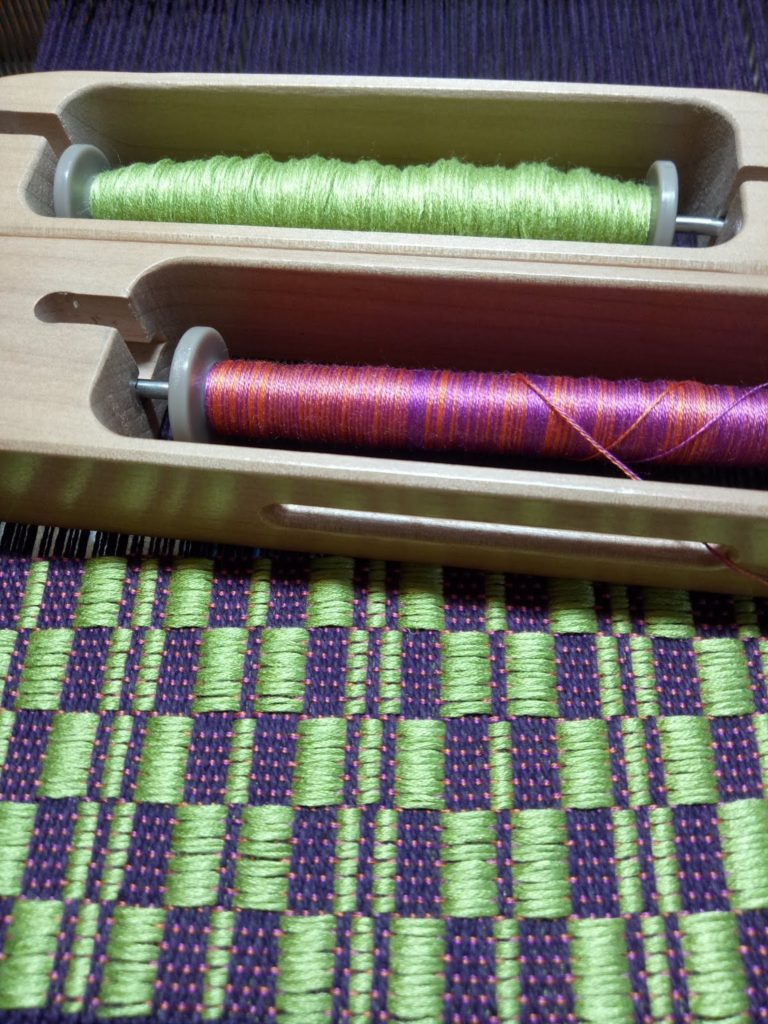
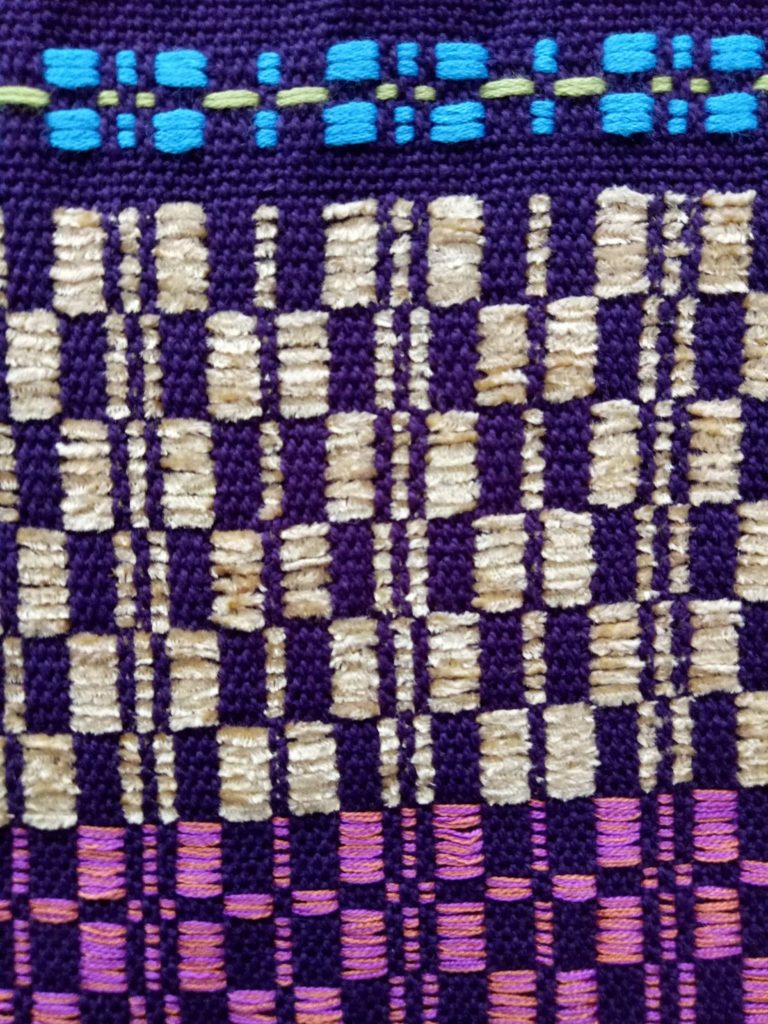
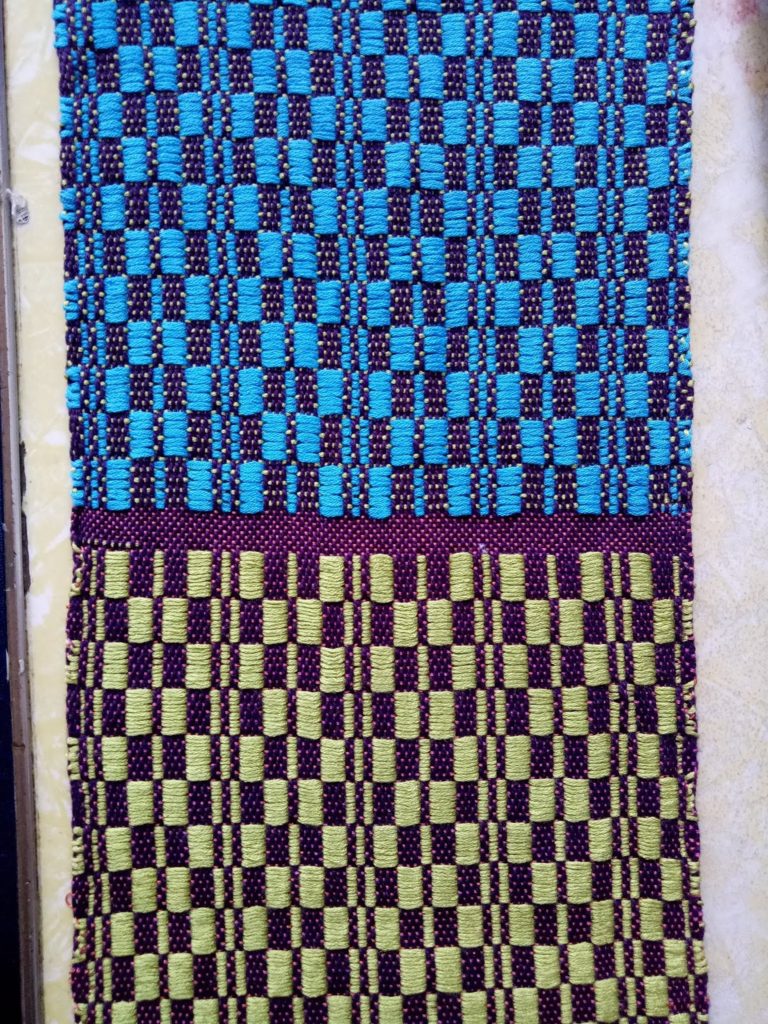
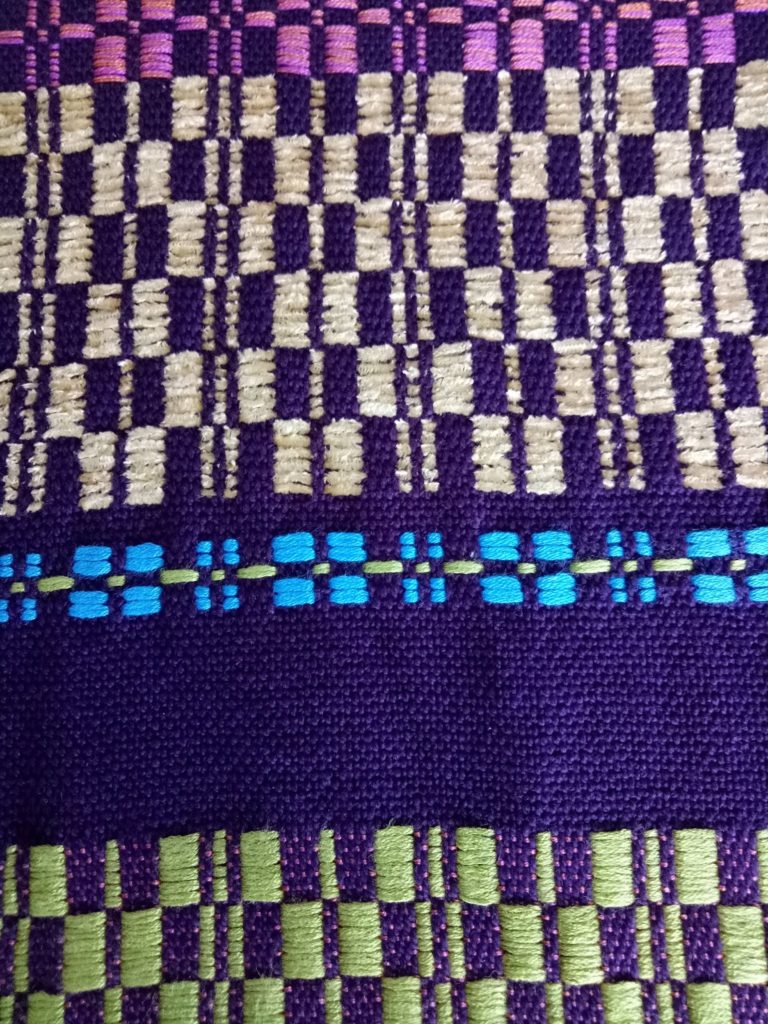
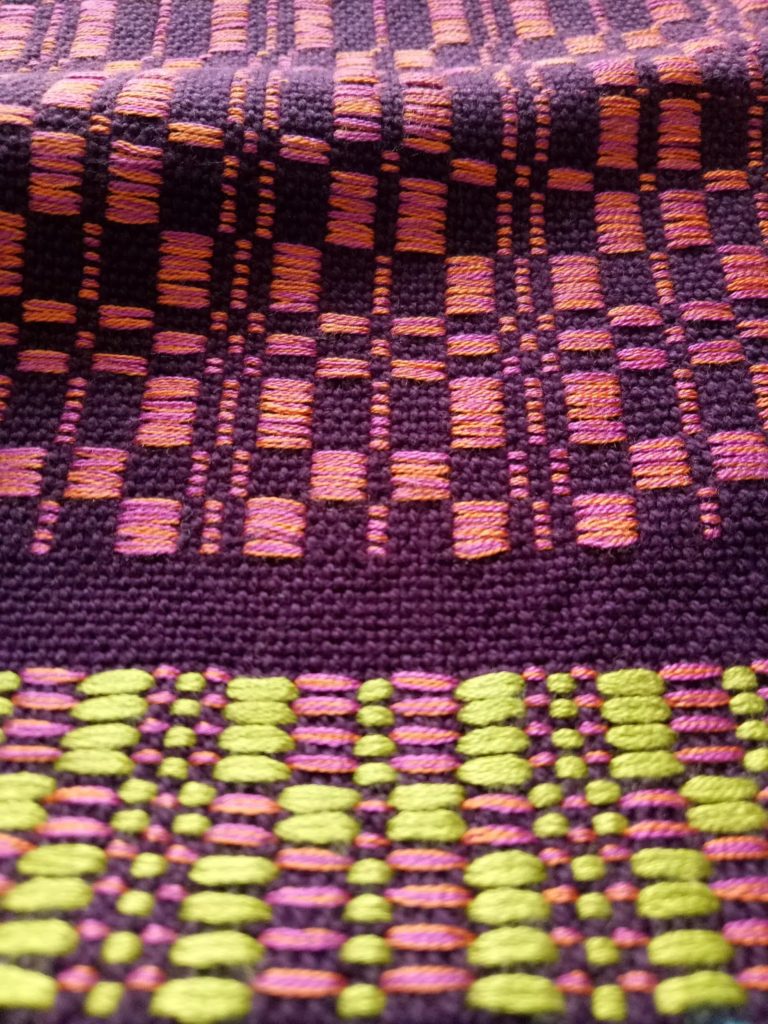
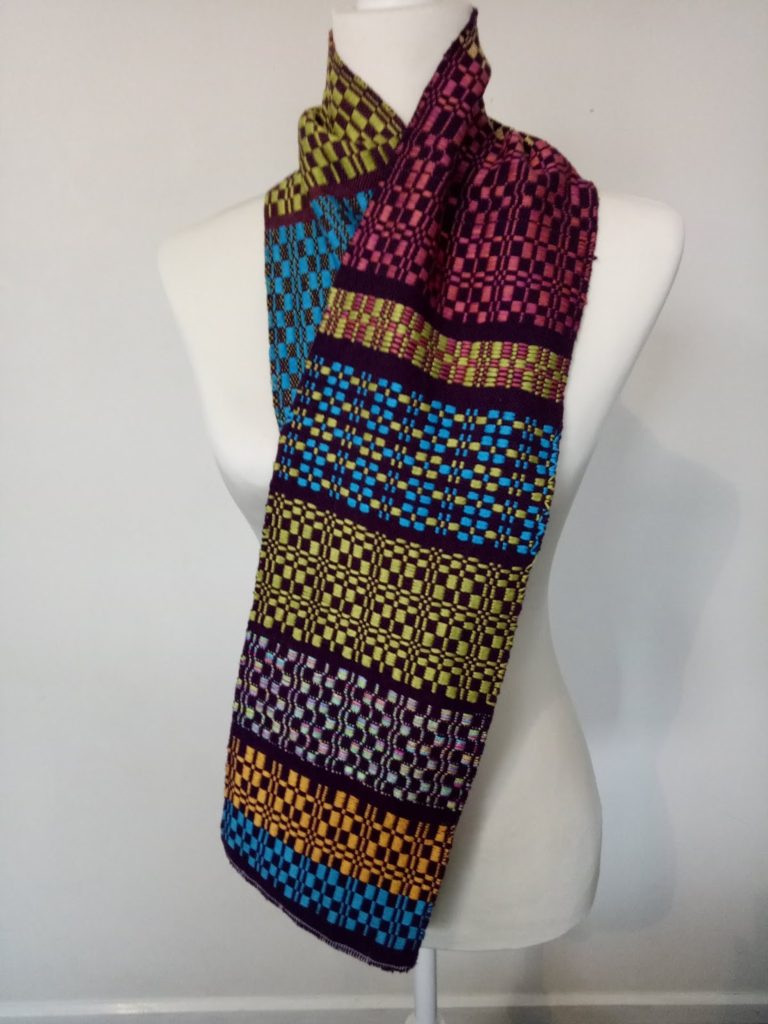
These all look very exciting – you DO have oodles of patience, that is clear! Is this woven much in the manner of overshot/crazyshot? In which case you could do it with a pickup stick (and patience!) on a RHL. I am tempted to give it a go! Thank you.
Yes, you can weave this on a rigid heddle loom. You could do it in a variety of ways – either with extra heddles, extra pick up sticks or heddle rods.
Thank you Kelly. I am enjoying the info and also the you tube tutorials
Karen
Wonderful, thank you!
Brigitte, you will see in the Facebook members group or on my FB page, that it can indeed be done on a RHL!
Such a beautiful sampler! I have pinned it, cause I need to try this myself.😁 Thanks for the inspiration Kelly!
I assume this was done on a floor loom and since I know nothing about floor looms this question may sound strange to you. Could there be a simpler version of the design for a RH. The colors and the designs are absolutely stunning and I would love to try something similar/simpler on my RH.
Brigitte
The difficulty would be that this pattern requires 6 treadles instead of 4. I haven't seen anyone weave this on a RHL, I would be interested to know too.
It’s beautiful and would look great as a very striking scarf. I’m pretty sure this could not be accomplished on a rigid heddle loom?